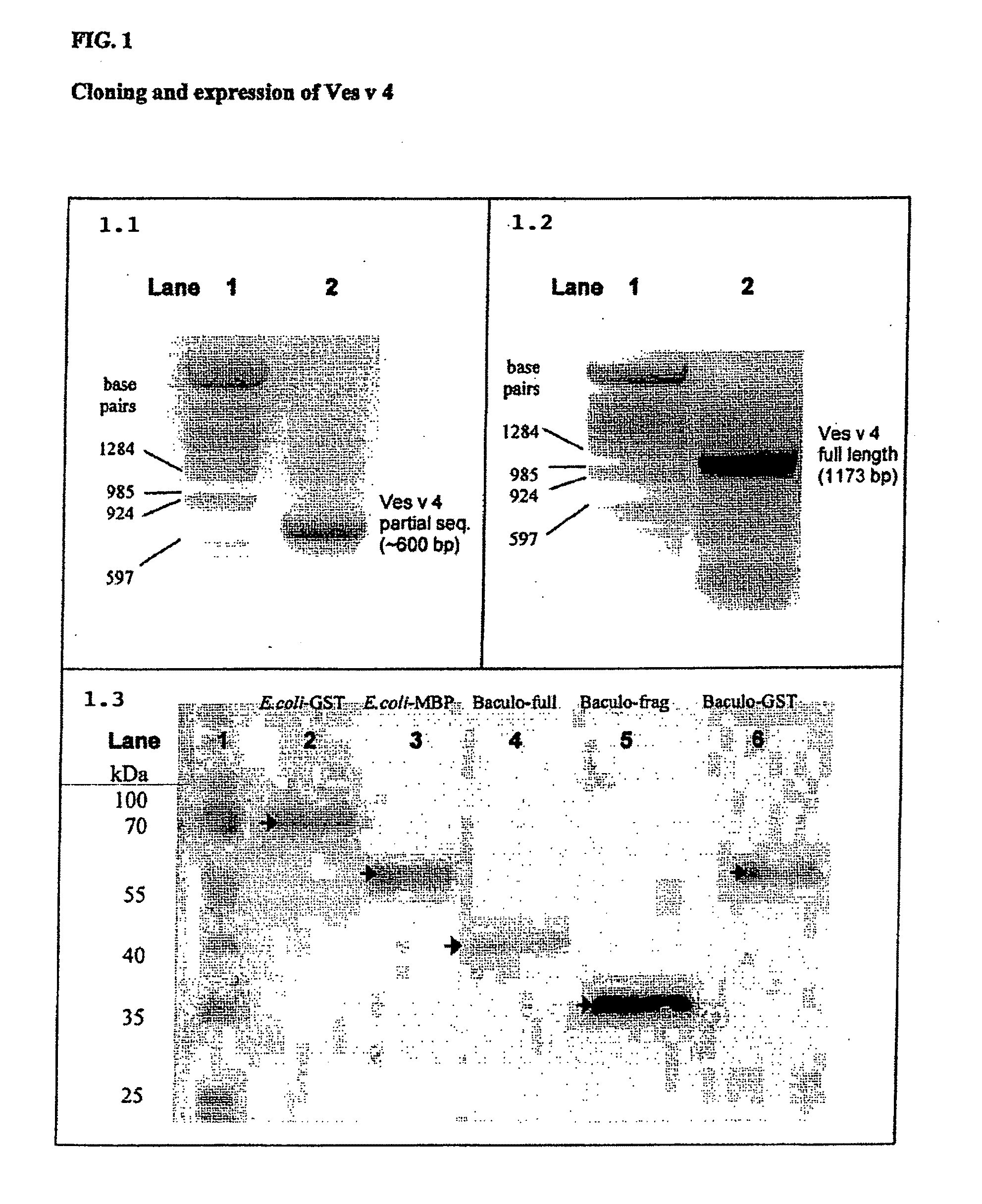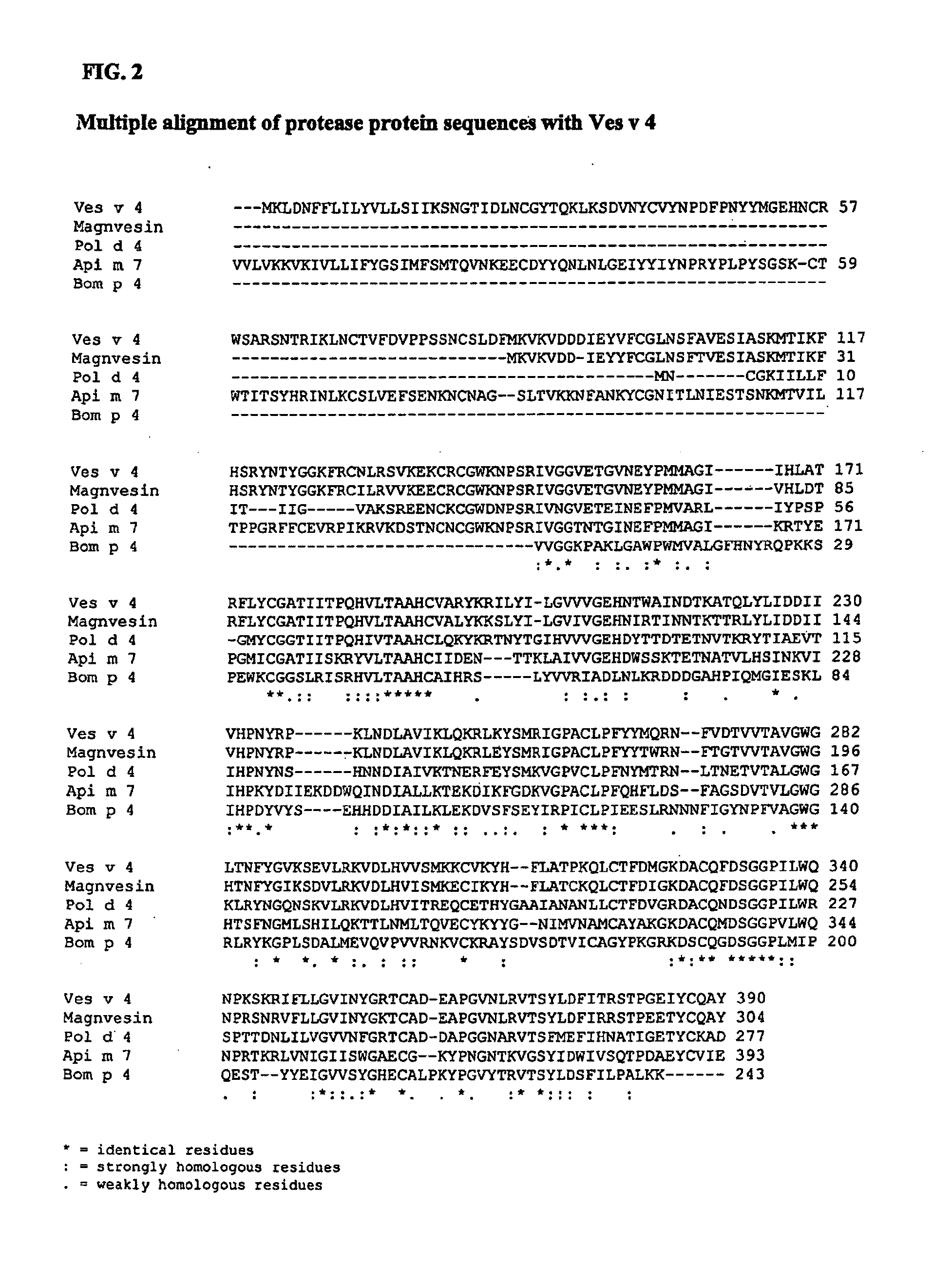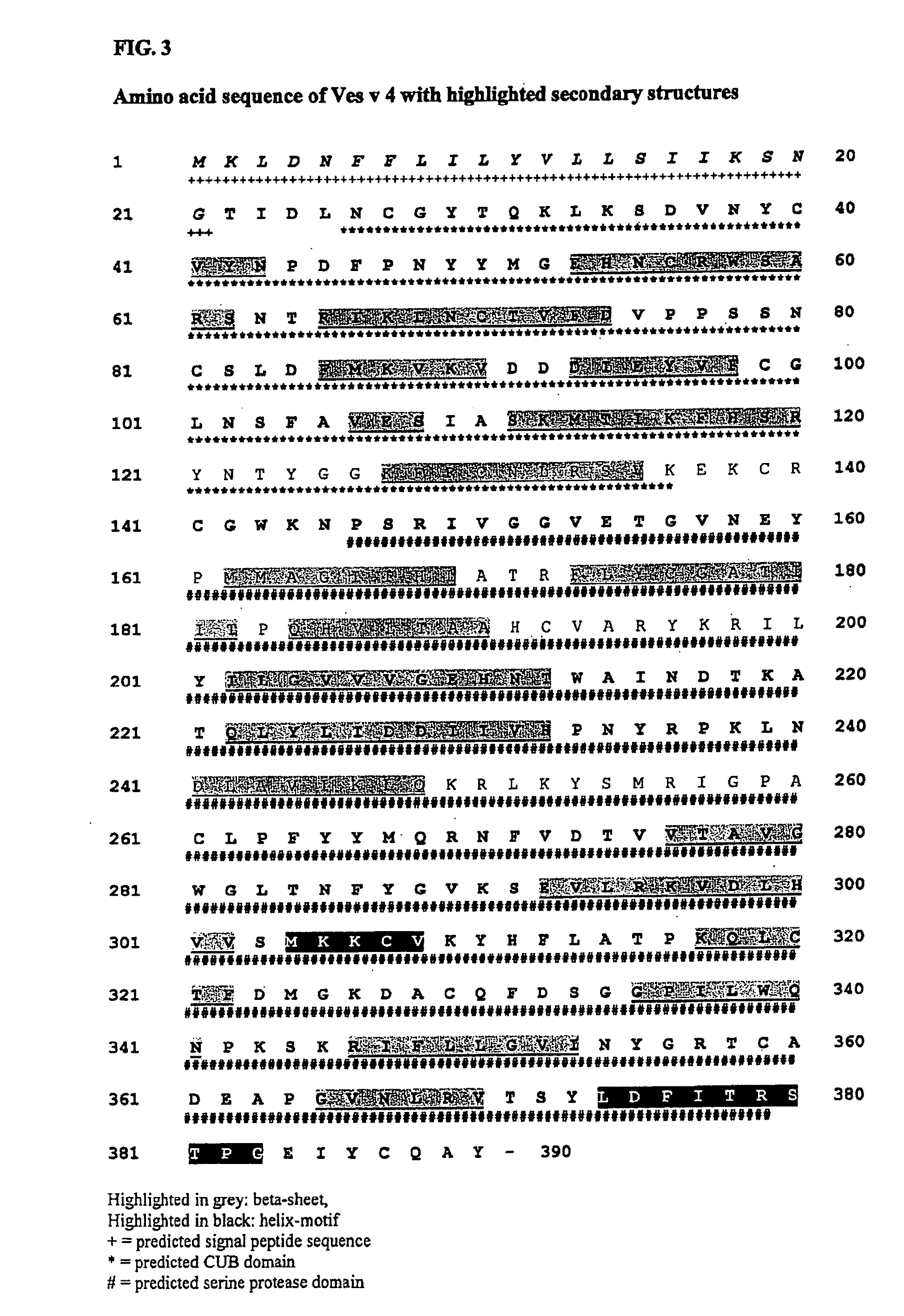Cloning and recombinant productions of vespula venom protease and methods of use thereof
- Summary
- Abstract
- Description
- Claims
- Application Information
AI Technical Summary
Benefits of technology
Problems solved by technology
Method used
Image
Examples
example 1
Cloning of Ves v 4
Materials and Methods
[0271]cDNA Synthesis
[0272]Total RNA was isolated from the separated stinger with attached venom sack and additional glands of yellow jacket (Vespula vulgaris) using peqGold TriFast™ (Peqlab Biotechnologie, Erlangen, Germany). SuperScript III Reverse Transcriptase (Invitrogen, Karlsruhe, Germany) was used to synthesize cDNA from the isolated total RNA. RNaseOut™ recombinant ribonuclease inhibitor (0.1 μl) (Invitrogen, Karlsruhe, Germany) was added to the standard 20 μl reaction mix containing 5 μl venom gland RNA. Reverse transcription was performed at 50° C. for 60 minutes. First strand cDNA was used as template for PCR amplification of Api m 5 and Ves v 3 DNA sequences.
Isolation of Ves v 4 Fragment
[0273]A fragment of the Ves v 4 ORF was amplified from Vespula vulgaris venom gland cDNA with Pfu DNA polymerase (Fermentas, St. Leon-Rot, Germany) using the degenerated primer 5′-NAC DGC KGC YCA YTG-3′. DNA from the PCR reaction was isolated from 1%...
example 2
Recombinant Bacterial Expression and Purification of Ves v 4
Materials and Methods
[0280]For expression of Ves v 4 in E. coli, the cDNA was cloned into the prokaryotic expression vector pMAL-c2x (NEB, Frankfurt, Germany). Expression in XL1 Blue E. coli cells and purification of the fusion protein was performed according to the recommendations of the manufacturers.
Results
[0281]The gene sequence is used to construct several expression vectors to produce recombinant protein. As an example, FIG. 1 box C shows the analysis of Western blotting and detection of recombinant proteins with anti-V5 antibodies derived from expression in E. coli as fusion to the glutathione-S-transferase (GST) domain (lane 2), fusion to the maltose-binding-protein (MBP) domain (lane 3).
Discussion
[0282]The full length sequence of Ves v 4 was cloned, sequenced and used for successful expression of the recombinant proteins. The recombinant expression in prokaryotic systems revealed difficulties in obtaining suitable ...
example 3
Production of Recombinant Ves v 4 in Sf9 Cells and Purification
Materials and Methods
Production of Recombinant Baculovirus
[0283]Spodoptera frugiperda cells (Sf9, Invitrogen, Karlsruhe, Germany) were grown at 27° C. in serum-free medium (Express Five SFM, containing 16.5 mM glutamine and 10 μg / ml gentamycin; Invitrogen, Karlsruhe, Germany). Cell density was determined by haemocytometer counts, cell viability was evaluated by staining with Trypan Blue. Recombinant baculovirus was generated by cotransfection of Sf9 cells with BaculoGold bright DNA (BD Pharmingen, Heidelberg, Germany) and the baculovirus transfer vector pAcGP67-B Ves v 4 according to recommendations of the manufacturer. High titer stocks were produced by three rounds of virus amplification and optimal MOI for recombinant protein expression was determined empirically by infection of Sf9 cells in 100 ml suspension flask (1.5-2×106 cells / ml in 20 ml suspension culture) with serial dilutions of high titer virus stock.
Express...
PUM
| Property | Measurement | Unit |
|---|---|---|
| Fraction | aaaaa | aaaaa |
| Fraction | aaaaa | aaaaa |
| Fraction | aaaaa | aaaaa |
Abstract
Description
Claims
Application Information
 Login to View More
Login to View More - R&D
- Intellectual Property
- Life Sciences
- Materials
- Tech Scout
- Unparalleled Data Quality
- Higher Quality Content
- 60% Fewer Hallucinations
Browse by: Latest US Patents, China's latest patents, Technical Efficacy Thesaurus, Application Domain, Technology Topic, Popular Technical Reports.
© 2025 PatSnap. All rights reserved.Legal|Privacy policy|Modern Slavery Act Transparency Statement|Sitemap|About US| Contact US: help@patsnap.com



